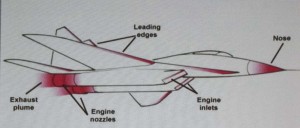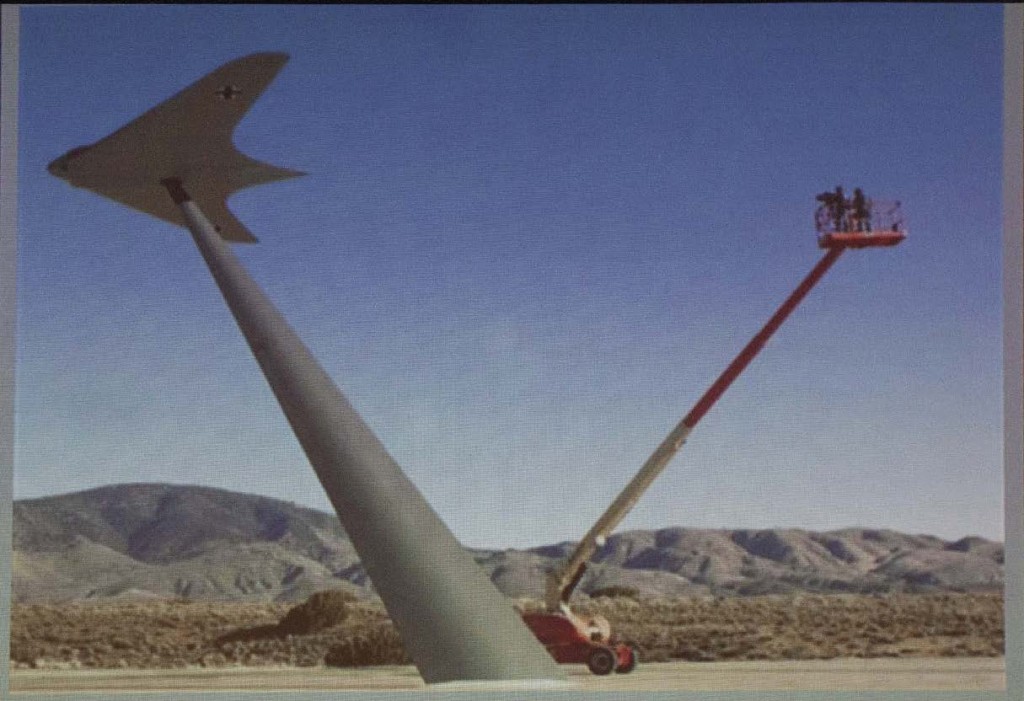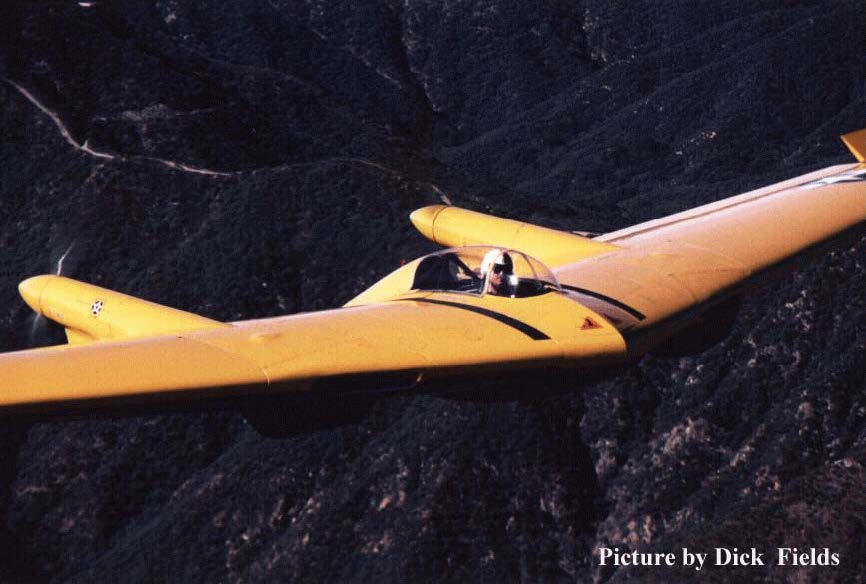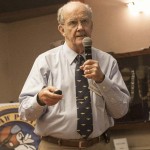Gramps was delighted to learn of the qualities and usefulness of the B-2 Bomber this month. Commander Robert A. Johnson, US Navy (Ret) told us of the B-2 Spirit Bomber and its remarkable design and capabilities. Bob Johnson served a long and very productive career in the Navy, including several assignments in combat missions. He also worked as a test pilot and later became the Director of the US Naval Test Pilot School. After his retirement he became the Customer Requirements Manager
 For the Northrop B-2 Spirit Bomber program. He described “stealth” as Low Observables including RADAR, INFRARED, VISUAL, AUDIO, and ELECTRONIC transmissions. This means that a stealth aircraft must not only avoid a radar signature but must also not possess hot areas such as engine heat and exhaust. It must also have a low visibility profile so it is not easily spotted visually. The sound level produced must be as low as possible to prevent persons on the ground from sensing its presence. Electronic emissions such as radar and radio communications must be used very carefully to avoid detection. To accomplish this, a model was made and placed on a tower that could rotate the model for radar detection testing. The sensing instruments were set up around the tower and the aircraft was rotated to simulate how it would be sensed while in flight. All this occurred at secret radar sites in the desert.
For the Northrop B-2 Spirit Bomber program. He described “stealth” as Low Observables including RADAR, INFRARED, VISUAL, AUDIO, and ELECTRONIC transmissions. This means that a stealth aircraft must not only avoid a radar signature but must also not possess hot areas such as engine heat and exhaust. It must also have a low visibility profile so it is not easily spotted visually. The sound level produced must be as low as possible to prevent persons on the ground from sensing its presence. Electronic emissions such as radar and radio communications must be used very carefully to avoid detection. To accomplish this, a model was made and placed on a tower that could rotate the model for radar detection testing. The sensing instruments were set up around the tower and the aircraft was rotated to simulate how it would be sensed while in flight. All this occurred at secret radar sites in the desert.
 As compared to the B-24 bomber, the Wing is much more efficient creating lift and lowering drag. The British created one of the first delta wing bombers, the Vulcan B-1 It did have a vertical tail which would have made it very visible on radar. The U.S. currently has the F-22 which has been designed specifically as a stealth aircraft and as such has a minimal radar image. It does have tails but they are treated in such a way as to not give away the aircraft’s presence.
As compared to the B-24 bomber, the Wing is much more efficient creating lift and lowering drag. The British created one of the first delta wing bombers, the Vulcan B-1 It did have a vertical tail which would have made it very visible on radar. The U.S. currently has the F-22 which has been designed specifically as a stealth aircraft and as such has a minimal radar image. It does have tails but they are treated in such a way as to not give away the aircraft’s presence.
 In history, Jack Northrop knew that the flying wing design was superior to the standard aircraft but it was difficult to accomplish early on. It was in competition with conventional aircraft such as the B-36 created by Convair. There was significant political and investment opposition by members of the government. One of the developmental aircraft was the N9M which had split ailerons and 2 engines. There is an N9M flying regularly at Planes of Fame Museum at Chino. The B-2 now exists and has four engines and no tails. It has digital flight controls. Boeing was invited to build the fuselage structure and created it out of graphite composite materials. A gigantic oven was built to fuse the components. It has tremendous bomb carrying capacity as well as extreme flight efficiency. It can be midair refueled for very long runs to target. It has a rotary launcher for multiple 2000 pound bombs as well as nuclear capability. Although the original plan was for 132 B-2s, the government reduced the number to 32 then the congress eventually stopped production of new aircraft at 20, favoring the F-22. There are still around 20 B-2 bombers still in active service.
In history, Jack Northrop knew that the flying wing design was superior to the standard aircraft but it was difficult to accomplish early on. It was in competition with conventional aircraft such as the B-36 created by Convair. There was significant political and investment opposition by members of the government. One of the developmental aircraft was the N9M which had split ailerons and 2 engines. There is an N9M flying regularly at Planes of Fame Museum at Chino. The B-2 now exists and has four engines and no tails. It has digital flight controls. Boeing was invited to build the fuselage structure and created it out of graphite composite materials. A gigantic oven was built to fuse the components. It has tremendous bomb carrying capacity as well as extreme flight efficiency. It can be midair refueled for very long runs to target. It has a rotary launcher for multiple 2000 pound bombs as well as nuclear capability. Although the original plan was for 132 B-2s, the government reduced the number to 32 then the congress eventually stopped production of new aircraft at 20, favoring the F-22. There are still around 20 B-2 bombers still in active service.
 There has been only one loss of the B-2. That occurred in Guam when water obstructed the Pitot tube and caused a false high airspeed reading on takeoff resulting in a stall/crash. There was also one that had an engine fire but that was repaired and returned to service.
There has been only one loss of the B-2. That occurred in Guam when water obstructed the Pitot tube and caused a false high airspeed reading on takeoff resulting in a stall/crash. There was also one that had an engine fire but that was repaired and returned to service.
We thank Bob Johnson for his excellent presentation as well as his work in promoting this extremely stealthy and efficient aircraft.





